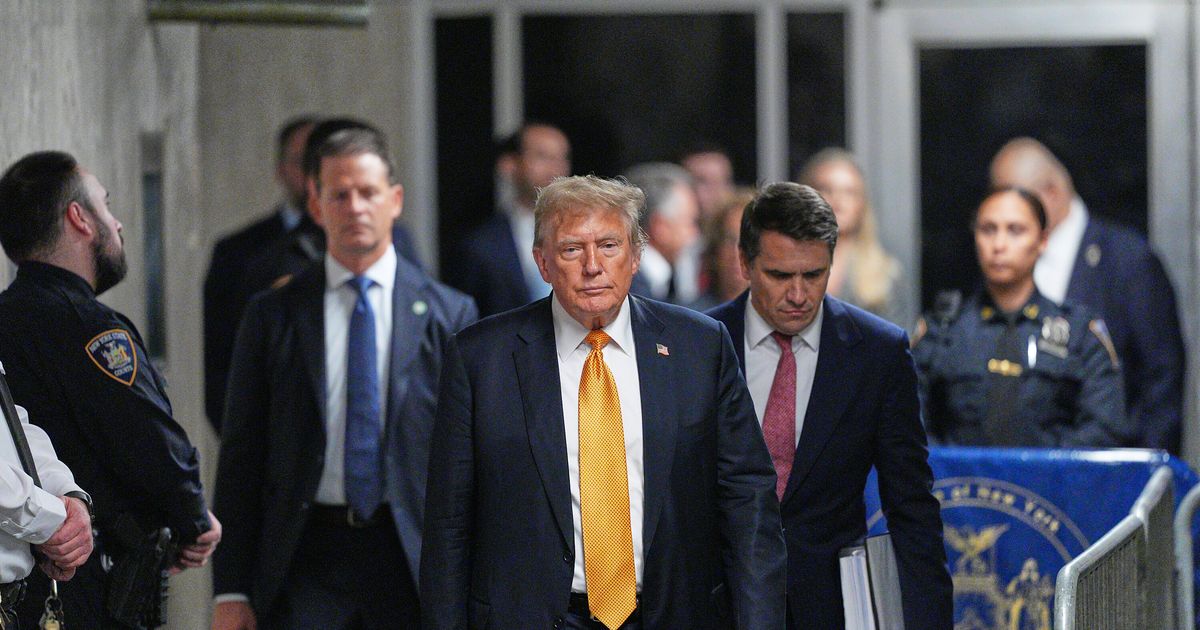This article is part of HuffPost’s biweekly politics newsletter. Click here to subscribe.
New York Supreme Court Judge Juan Merchan gave the jurors in former President Donald Trump’s hush money trial their most important directive on Wednesday morning: how, procedurally, to decide the outcome of the case.
Reading from the 55-page set of jury instructions, Merchan somberly told members of the 12-person panel that the responsibility of evaluating the evidence presented at trial rests with them.
He then explained next steps, including what jurors must agree on — and what they do not have to agree on.
The specific language of the jury instructions was haggled over at length last week by attorneys for both the defense and the prosecution, given the instructions’ inherent power in shaping how the jury comes to a verdict.
Trump is charged with 34 felony counts of falsifying business records in the first degree. Each of the counts corresponds to a different document, including invoices and checks reimbursing his former fixer, Michael Cohen, for a hush money payment to the porn actor Stormy Daniels.
“Under our law,” Merchan told the jury, “a person is guilty of falsifying business records in the first degree when, with intent to defraud that includes an intent to commit another crime or to aid or conceal the commission thereof, that person: makes or causes a false entry in the business records of an enterprise.”
To find Trump guilty on any count, the jurors must agree that he intentionally — with “conscious objective or purpose” — sought to defraud “any person or entity,” with the intent to “commit another crime or to aid or conceal the commission thereof.”
So, they have to come to the conclusion that Trump falsified the records in furtherance of some other crime. That crime, according to prosecutors, is New York Election Law section 17-152, which prevents any “conspir[acy] to promote or prevent the election of any person to a public office by unlawful means.”
Throughout the trial, prosecutors emphasized how poorly Trump’s campaign was going in October 2016. The “Access Hollywood” tape had just been published, revealing crude comments he’d made about sexually assaulting women. The damage that video had already done to Trump’s campaign, prosecutors said, was what motivated Trump to stop Daniels from speaking publicly about their alleged 2006 sexual encounter.
Trump’s defense attorneys claimed Trump knew nothing about the payment at the time it was made. Trump also has consistently denied having the affair. Prosecutors argued that the voting public had the right to hear Daniels’ story and make their own decisions about Trump’s fitness for office.
Did Trump falsify the records because he was engaged in a conspiracy to win the 2016 election? That’s what the jurors will need to agree on. But they won’t have to be unanimous on the exact details of the conspiracy — the “unlawful means.”
The prosecution has proposed three possibilities to choose from: that the conspiracy involved violations of the Federal Election Campaign Act; the falsification of other business records; or the violation of local tax laws.
For example, jurors might be persuaded to see the hush money reimbursement scheme as a campaign finance violation because it was more than $2,700 — the legal limit for an individual campaign donation in 2015 and 2016. Or they could decide that the shell company Cohen opened up to funnel money to Daniels spawned more falsified business documents. The rationale behind Trump’s actions is where individual jurors could disagree while still finding Trump guilty on all counts.
The rest of Merchan’s instructions were largely boilerplate. The judge told the jurors that Trump should be presumed innocent until proven guilty. He gave them tips on how to evaluate the trustworthiness of the evidence — suggesting they take into account a witness’ consistency and demeanor on the stand, for example.
“You bring to this process all of your varied experiences. In life, you frequently decide the truthfulness and accuracy of statements made to you by other people,” Merchan said. “The same factors used to make those decisions, should be used in this case when evaluating the testimony.”
With the jurors out for deliberations, it’s anyone’s guess how long it’ll be before they decide.

